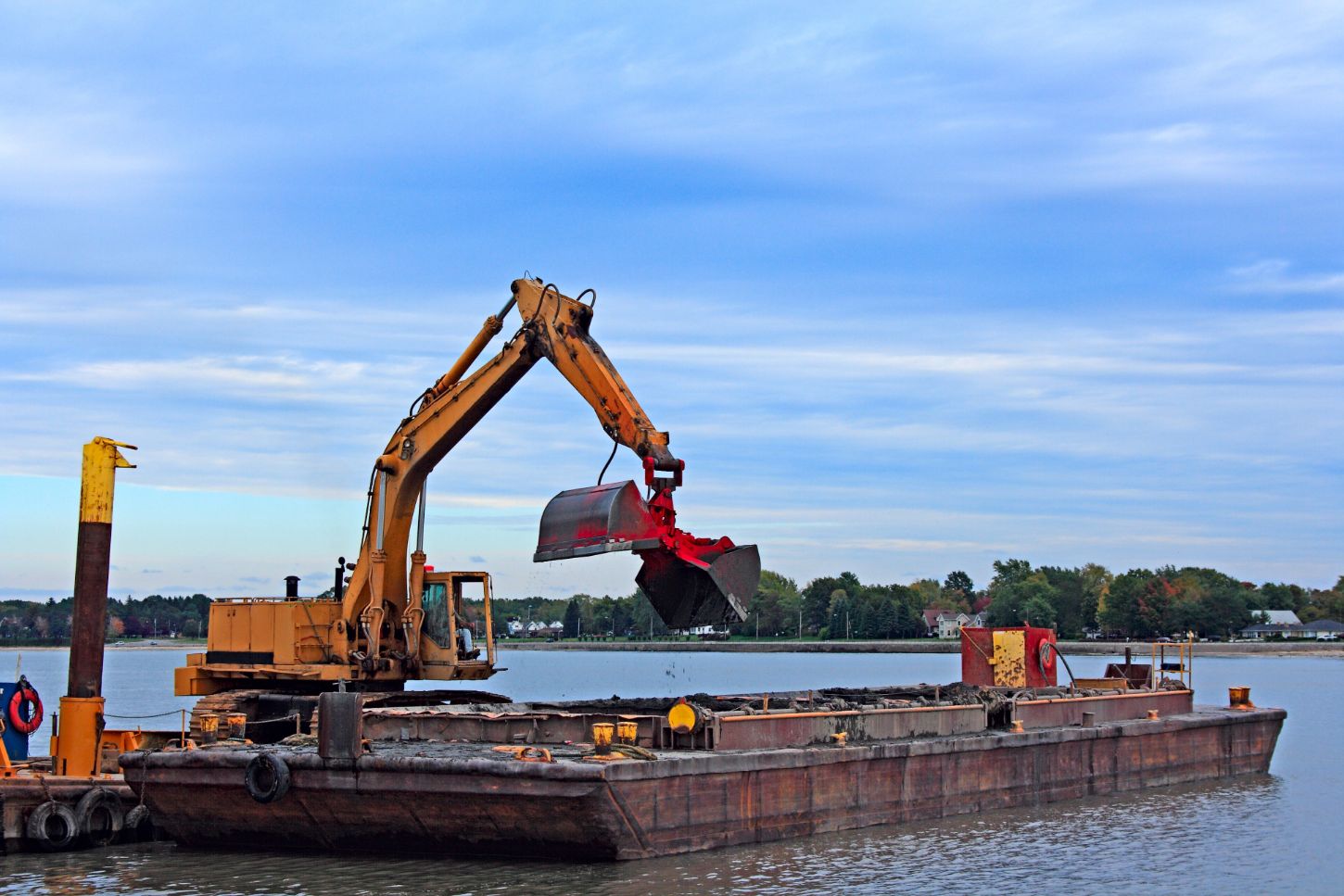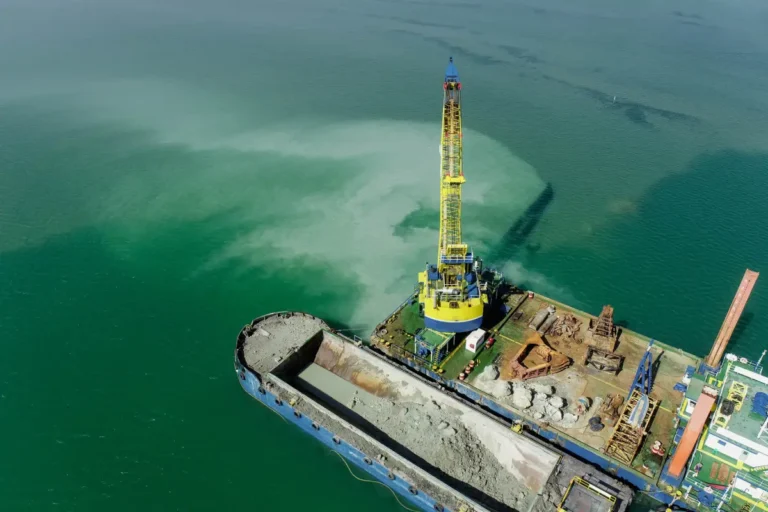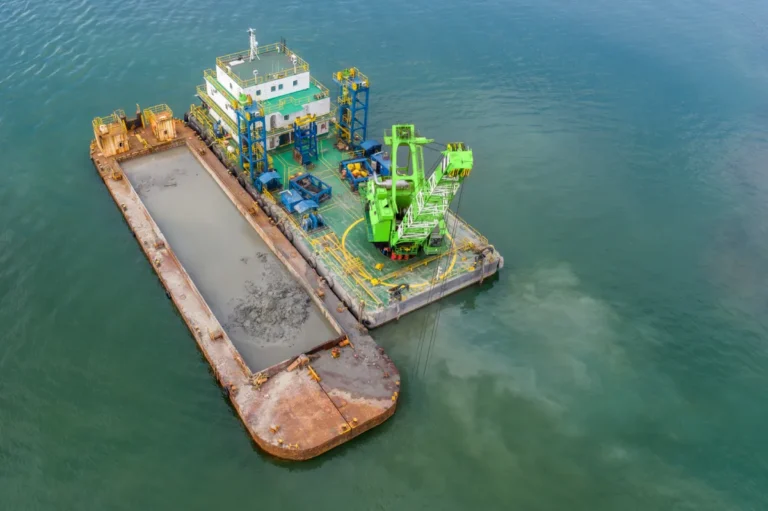In dredging operations, selecting the appropriate equipment is critical to achieving efficiency, cost control, and project success. Two commonly referenced terms—dredge barge and dredger—serve distinct purposes and should not be used interchangeably. A dredge barge is a support platform typically used for staging equipment or transporting materials. In contrast, a dredger is a self-contained system designed to remove sediment from water bodies actively. Understanding the functional differences between these two assets, including specific variants such as the sand dredging Barge, is essential for contractors, engineers, and decision-makers involved in planning and executing dredging projects. This article provides a detailed comparison to guide informed equipment selection based on operational needs.
What is a Dredge Barge?
A dredge barge is a floating platform specifically designed to support dredging operations by serving as a stable work surface for heavy equipment or as a transport vessel for dredged material. Unlike active dredging machinery, a dredge barge does not perform excavation itself but plays a critical support role in marine and inland waterway projects.
Typically, a dredge barge features a flat-deck structure that offers ample space for mounting auxiliary equipment such as cranes, winches, pumps, and pipelines. This open design enables flexible configurations tailored to project requirements. Most dredge barges lack self-propulsion systems, meaning they must be towed to the worksite or anchored in position using spuds or mooring lines.
Dredge barges are commonly used in large-scale sediment removal operations where the extracted material needs to be temporarily stored or transported to a disposal site. In the case of a sand dredging barge, the platform is often specifically designed for sand removal applications, particularly in coastal or riverine environments. These barges are designed to withstand abrasive materials and carry substantial loads, making them vital assets in high-volume sand dredging projects.
Whether used to stage pumping systems, support a dredging excavator, or serve as a conduit between a dredging barge and the shoreline, dredge barges provide critical infrastructure for efficient and continuous dredging workflows.
Understanding the sand dredging Barge
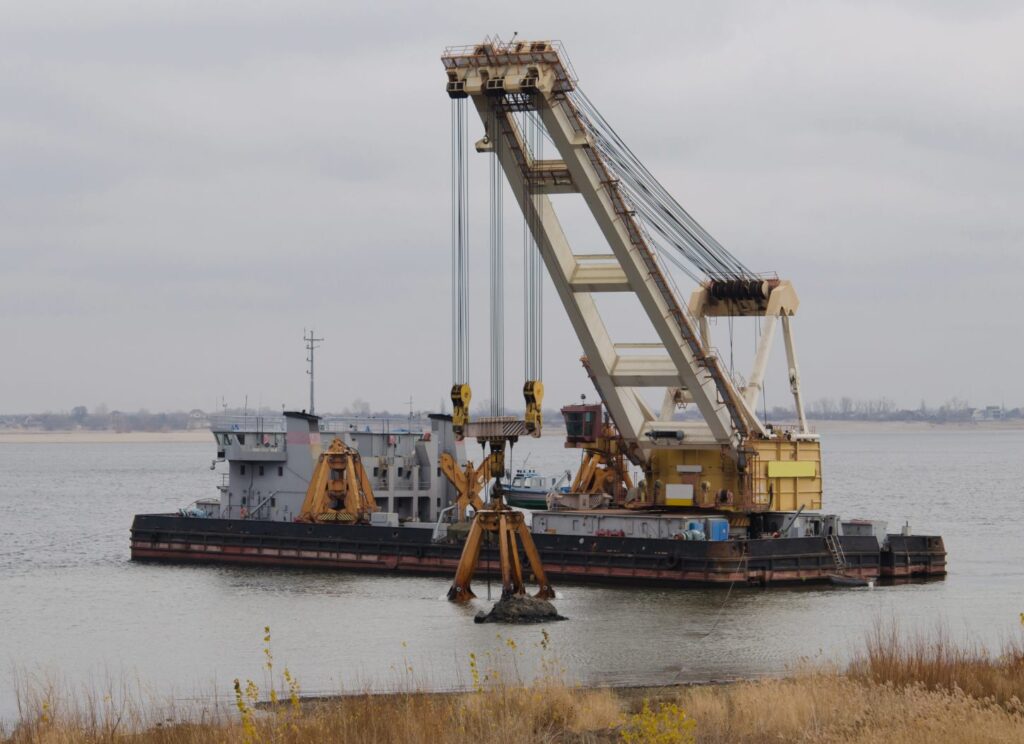
A sand dredging barge refers to a type of dredge barge specifically engineered for sand removal operations. These barges are an integral part of projects that require the efficient extraction, transportation, or stockpiling of large volumes of sand. Unlike general-purpose dredging barges, sand dredging barges are built with features that address the unique challenges posed by the high abrasiveness, weight, and volume of sand.
Sand dredging often demands reinforced hulls, high-capacity loading areas, and customized discharge systems to handle dense material without causing structural wear or operational delays. These barges may also be paired with powerful sand pumps or excavators mounted on deck to facilitate high-throughput dredging operations. Their decks are designed to support heavier payloads and withstand continuous loading and offloading cycles.
Sand dredging barges are most commonly deployed in coastal zones, riverbeds, and inland mining sites, where sand extraction is either for land reclamation, construction aggregate supply, or channel maintenance. In these environments, the combination of shallow waters and fine-grained material makes the use of standard dredging equipment insufficient without a dedicated support platform, such as a sand-specific dredge barge.
By using a sand dredging barge, operators can maintain efficient transport and staging of sand materials while minimizing downtime, especially in locations where shoreline access or pipeline discharge is limited.
What is a Dredger?
A dredger is a specialized vessel or machine designed to excavate and remove sediment, debris, or sand from underwater environments such as rivers, harbors, lakes, and coastal zones. Unlike a dredge barge, which serves as a floating support platform, a dredger is the primary tool responsible for actively performing the dredging operation.
Dredgers come in various types, each suited for different applications and site conditions. Common examples include:
- Cutter Suction Dredgers (CSDs): Equipped with a rotating cutter head to break up compacted materials before suctioning them through a pipeline.
- Auger Dredgers: Utilize a horizontal auger to loosen and transport sediment, making them ideal for precision dredging in environmental or shallow water applications.
- Trailing Suction Hopper Dredgers (TSHDs): Self-propelled vessels that vacuum sediment through trailing suction pipes and store it in onboard hoppers for offshore disposal or land reclamation.
- Jet Suction and Bucket Dredgers: Used in sand mining or small-scale dredging where direct material collection is needed.
Dredgers are fully integrated systems featuring powerful suction pumps, engines, discharge pipelines, and sediment handling mechanisms. This makes them highly efficient for continuous and large-scale operations, where quick and consistent material removal is essential.
Many dredgers—especially TSHDs and larger CSDs—are self-propelled, giving them the mobility to travel between project sites without the need for towing. This sets them apart from a dredging barge or a sand dredging barge, which typically remains stationary or must be positioned manually. The mobility, onboard systems, and purpose-built nature of dredgers make them indispensable for heavy-duty sediment removal and maintenance projects in waterways.
Key Differences Between a Dredge Barge and a Dredger
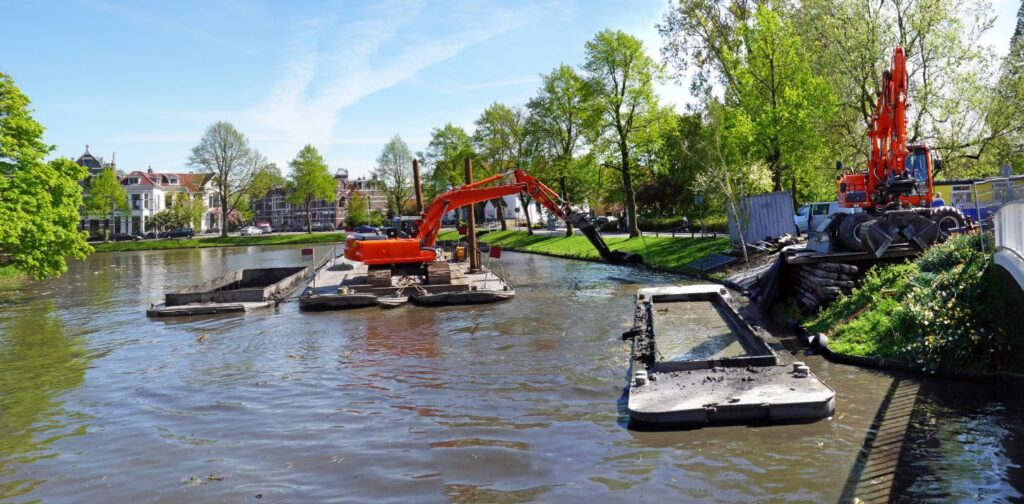
Although the terms are often used interchangeably, there are fundamental differences between a dredge barge and a dredger, both in functionality and design. Understanding these distinctions is essential for selecting the right equipment for dredging operations.
A dredge barge serves primarily as a support platform in dredging projects. It does not excavate material on its own but provides the base for mounting equipment such as pumps, excavators, cranes, or pipelines. In contrast, a dredger is an active sediment removal machine, engineered specifically to cut, suction, and transport debris or sediment from underwater surfaces.
Here are the key differences between the two:
- A dredge barge must be towed or anchored into position, whereas most dredgers—especially large or modern models—are self-propelled and capable of independent navigation.
- Dredgers are self-contained systems that integrate engines, suction or cutting heads, and discharge pipelines, while dredge barges depend on external equipment to perform dredging tasks.
- Dredge barges, including sand dredging barges, offer modular flexibility, making them suitable for custom configurations and support roles in various environments.
- Dredgers are purpose-built for efficient material removal and high-volume operations, making them the better choice for standalone dredging in deep or open waters.
- sand dredging barges are designed to support high-capacity sand dredging applications, but they still rely on attached pumps or excavators to function effectively. Unlike dredgers, which operate as all-in-one solutions, they require additional equipment.
The choice between a dredge barge and a dredger depends heavily on the project’s size, complexity, and material type, as each serves a distinct but complementary role in modern dredging operations.
When to Use a Dredge Barge
A dredge barge is the ideal solution for dredging projects that require flexible support capabilities rather than direct sediment removal. These floating platforms play a crucial role in operations where space, water depth, or equipment layout present logistical challenges. Their adaptability makes them especially valuable across a wide range of dredging scenarios.
Dredge barges are commonly used to:
- Support auxiliary dredging equipment such as submersible pumps, cutter heads, or long-reach excavators. By serving as a stable mounting platform, the dredge barge enables precise positioning and operation of equipment in remote or sensitive zones.
- Transport dredged material across short distances or to temporary staging areas. When paired with excavators or slurry pumps, a dredging barge can efficiently hold and relocate sediment without the need for immediate discharge pipelines.
- Operate in shallow or confined waterways where maneuvering a large dredger would be impractical or unsafe. In such areas, a dredge barge can be anchored or spudded in place, providing access for smaller, more targeted equipment setups.
Additional advantages of using a dredge barge or a sand dredging barge include:
- Modular design enables operators to customize deck layouts to match the specific needs of various equipment, sediment types, or project workflows.
- Lower upfront investment, especially when compared to fully integrated dredging systems. Dredge barges can be repurposed or outfitted incrementally, which helps manage budget constraints.
- Ease of transport and deployment, as these barges can be towed into position and quickly adapted to different dredging applications—from mining and construction to environmental remediation.
Whether it’s staging a dredging barge in a river channel or deploying a sand dredging barge for sand removal near shorelines, these platforms are indispensable assets for enhancing operational efficiency and site flexibility.
When to Use a Dredger
While a dredge barge plays a critical support role in many marine operations, a dredger is the preferred solution when direct and continuous sediment removal is required. Dredgers are purpose-built to handle large volumes of material with precision and speed, making them essential in demanding environments where efficiency and productivity are top priorities.
Dredgers are most effective in the following scenarios:
- Large-scale dredging of harbors, rivers, or canals, where the volume of sediment is substantial and time constraints are tight. Their integrated systems allow for continuous excavation and discharge without relying on secondary platforms.
- Projects that require integrated suction and discharge systems, such as cutter suction dredgers or trailing suction hopper dredgers. These machines can excavate, pump, and transport material through pipelines or onboard storage with minimal interruption.
- Sediment removal from deep or fast-moving water bodies, where stability, precision, and powerful suction are necessary to maintain control and safety during operation.
Unlike a dredging barge or sand dredging barge, which must be paired with external pumps or excavators, dredgers operate as self-contained systems. They combine power units, cutter heads or suction nozzles, sediment pipelines, and control systems into a single, efficient vessel.
Dredgers also offer significant advantages in terms of operational efficiency. Their ability to work continuously—without repositioning equipment or relying on auxiliary platforms—reduces project timelines and labor requirements. This makes them especially valuable for time-sensitive dredging projects, coastal restoration efforts, and navigational maintenance in commercial ports.
When the goal is high-capacity, uninterrupted sediment removal, deploying a dredger is far more effective than relying solely on a dredge barge or support system.
The Combined Role of Dredge Barges and Dredgers
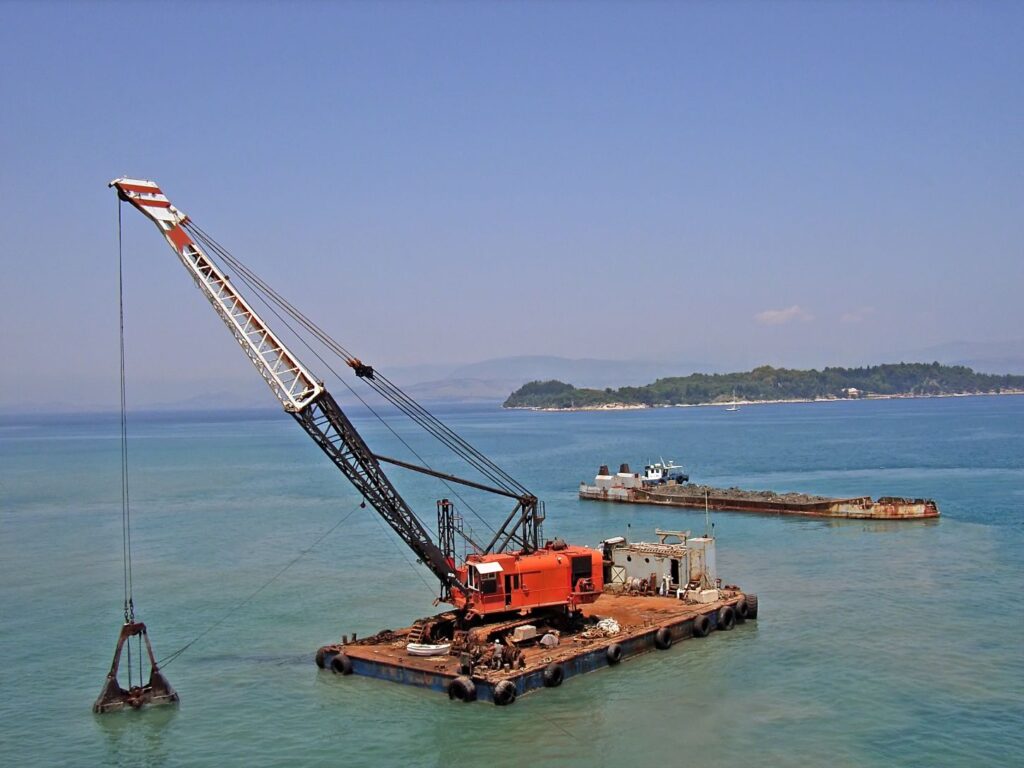
In many large-scale or complex dredging projects, dredge barges and dredgers are not used independently but rather as part of an integrated system. Their combined use allows contractors to optimize both the excavation and material handling phases of dredging, increasing overall efficiency and reducing operational delays.
While a dredger focuses on the active removal of sediment from the waterbed, a dredge barge plays a crucial support role by managing the transportation, staging, or processing of the dredged material. This collaborative approach is particularly beneficial in operations where continuous dredging is necessary and interruptions must be minimized.
For example:
- A cutter suction dredger may excavate silt from a riverbed and discharge it into a nearby dredging barge. The barge then either stores the material temporarily or transports it to a disposal site.
- In coastal sand mining, a sand dredging barge can receive high volumes of wet sand pumped from a dredger, allowing the dredger to maintain nonstop suction operations without halting to manage discharge logistics.
- On confined or urban project sites, dredge barges can serve as mobile platforms for sediment dewatering equipment or pipeline boosters, extending the functionality of the dredging system.
This synergy between a dredge barge and a dredger helps balance the workload, reduces idle time, and enables a more streamlined operational flow. By combining specialized excavation equipment with versatile support platforms, dredging teams can handle larger volumes, adapt to diverse environments, and achieve more consistent results across varying project conditions.
Factors to Consider When Choosing Between the Two
Selecting between a dredge barge and a dredger depends on several operational and environmental factors that directly impact the success and efficiency of a dredging project. Each equipment type offers distinct advantages, and selecting the right one begins with a thorough evaluation of the site conditions and project objectives.
Key factors to consider include:
- Nature of the sediment: The type of material to be removed plays a critical role. For soft sediments, such as silt or fine sand, a dredger with integrated suction capabilities may be more effective. In contrast, projects involving coarser materials, such as gravel or dense sand, may benefit from the modular support of a dredge barge, particularly when paired with a heavy-duty excavator or a slurry pump. A sand dredging barge is especially useful in high-volume sand removal projects.
- Waterway size and access limitations: In narrow or shallow areas, maneuverability is limited. A stationary dredge barge offers flexibility in tight spaces, where self-propelled dredgers may struggle to operate safely. In contrast, for open water or large port environments, a mobile dredger can cover more area without frequent repositioning.
- Operational timeframe and scale: If the project requires continuous dredging over a large area within a short timeframe, a fully integrated dredger offers better throughput and speed. A combination of a dredging barge and portable pumps or excavators may better serve smaller-scale or intermittent operations.
- Budget constraints and equipment availability: Dredgers generally represent a higher capital investment due to their built-in systems and mobility. A dredge barge presents a more cost-effective option for contractors with existing dredging equipment or those seeking a phased investment approach. sand dredging barges are often deployed for cost-sensitive sand mining projects where modularity is key.
To make the most informed decision, it’s essential to consult with dredging specialists who can assess the site, sediment type, and performance requirements. Their expertise ensures the right balance between efficiency, safety, and cost, whether the project calls for a dredger, a dredge barge, or a hybrid solution.
Conclusion
Choosing between a dredge barge and a dredger comes down to understanding your project’s scope, site conditions, sediment type, and operational goals. While dredgers are purpose-built for high-efficiency excavation and mobility, dredge barges—including specialized options like sand dredging barges—offer unmatched flexibility and support capabilities in diverse working environments. Both systems play vital roles in the dredging industry, and in many cases, they work best when used in conjunction with each other. By evaluating your requirements and consulting with experienced dredging professionals, you can ensure that the equipment you select aligns with your budget, timeline, and performance expectations, ultimately leading to a safer and more productive dredging operation.


